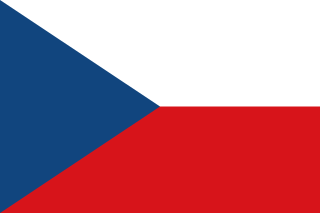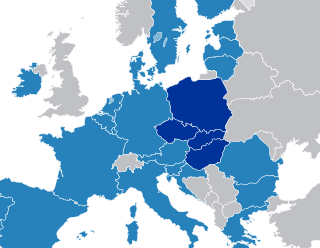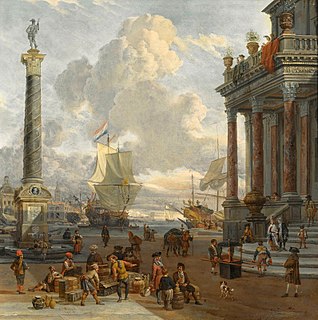| Part of a series on the |
| Czechoslovak Socialist Republic |
|---|
 |
This article has multiple issues. Please help improve it or discuss these issues on the talk page . (Learn how and when to remove these template messages)
|
| Part of a series on the |
| Czechoslovak Socialist Republic |
|---|
 |
This article has multiple issues. Please help improve it or discuss these issues on the talk page . (Learn how and when to remove these template messages)
|
Czechoslovakia inherited the bulk of existing industrial assets following the breakup of the Austro-Hungarian Empire after World War I. Industrialization continued in the interwar years. Even before World War II, the country's armaments and heavy industries were producing commodities accepted throughout the world. World War II left Czechoslovak industrial facilities largely intact. In the late 1940s, Czechoslovakia was one of the most industrialized countries in the world, and the quality of its products was comparable to that of other industrialized countries.

World War I, also known as the First World War or the Great War, was a global war originating in Europe that lasted from 28 July 1914 to 11 November 1918. Contemporaneously described as "the war to end all wars", it led to the mobilisation of more than 70 million military personnel, including 60 million Europeans, making it one of the largest wars in history. It is also one of the deadliest conflicts in history, with an estimated nine million combatants and seven million civilian deaths as a direct result of the war, while resulting genocides and the 1918 influenza pandemic caused another 50 to 100 million deaths worldwide.

In economics, a commodity is an economic good or service that has full or substantial fungibility: that is, the market treats instances of the good as equivalent or nearly so with no regard to who produced them. Most commodities are raw materials, basic resources, agricultural, or mining products, such as iron ore, sugar, or grains like rice and wheat. Commodities can also be mass-produced unspecialized products such as chemicals and computer memory.

World War II, also known as the Second World War, was a global war that lasted from 1939 to 1945. The vast majority of the world's countries—including all the great powers—eventually formed two opposing military alliances: the Allies and the Axis. A state of total war emerged, directly involving more than 100 million people from over 30 countries. The major participants threw their entire economic, industrial, and scientific capabilities behind the war effort, blurring the distinction between civilian and military resources. World War II was the deadliest conflict in human history, marked by 50 to 85 million fatalities, most of whom were civilians in the Soviet Union and China. It included massacres, the genocide of the Holocaust, strategic bombing, premeditated death from starvation and disease, and the only use of nuclear weapons in war.
After the KSC took control of the country, the industrial sector — particularly defense and heavy industry — received priority in terms of investment funds, labor, and materials. Industry was the leading sector in expansion of the economy. The industrial base grew rapidly, as recorded by the official index of industrial production. Starting from a base of 100 in 1948, the index increased to 371.9 in 1960 and 665.5 in 1970. The late 1970s witnessed some deceleration in industrial growth, and the index increased from 921.4 in 1975 to 1,156.7 in 1980. In 1985 the index reached 1,322. The figures suggested substantial growth, and industry's overall performance since World War II had in fact been impressive.

The Communist Party of Czechoslovakia was a Communist and Marxist–Leninist political party in Czechoslovakia that existed between 1921 and 1992. It was a member of the Comintern. Between 1929 and 1953 it was led by Klement Gottwald. After its election victory in 1946 it seized power in the 1948 Czechoslovak coup d'état and established a one-party state allied with the Soviet Union. Nationalization of virtually all private enterprises followed.
To invest is to allocate money in the expectation of some benefit in the future.
During the 1970s, Czechoslovakia had signed specialization and joint investment agreements with other Comecon members, committing the country to specific long-term obligations in particular production branches (machine tools and railroad locomotives, for example), partly to ensure the inflow of energy and raw materials.

The Council for Mutual Economic Assistance was an economic organization from 1949 to 1991 under the leadership of the Soviet Union that comprised the countries of the Eastern Bloc along with a number of communist states elsewhere in the world.
In 1985 the most important branches of industry in terms of the monetary value of their contribution to the economy were machinery, electrical engineering, metalworking, chemicals, asbestos, rubber, and ferrous metallurgy (including ore extraction). Important manufactured products were vehicles, railroad goods, aircraft, electrical goods, heavy machinery, and precision equipment.

A machine is a mechanical structure that uses power to apply forces and control movement to perform an intended action. Machines can be driven by animals and people, by natural forces such as wind and water, and by chemical, thermal, or electrical power, and include a system of mechanisms that shape the actuator input to achieve a specific application of output forces and movement. They can also include computers and sensors that monitor performance and plan movement, often called mechanical systems.

Electrical engineering is a professional engineering discipline that generally deals with the study and application of electricity, electronics, and electromagnetism. This field first became an identifiable occupation in the later half of the 19th century after commercialization of the electric telegraph, the telephone, and electric power distribution and use. Subsequently, broadcasting and recording media made electronics part of daily life. The invention of the transistor, and later the integrated circuit, brought down the cost of electronics to the point they can be used in almost any household object.

The chemical industry comprises the companies that produce industrial chemicals. Central to the modern world economy, it converts raw materials into more than 70,000 different products. The plastics industry contains some overlap, as most chemical companies produce plastic as well as other chemicals.
In the 1980s, Czechoslovakia was — except for the Soviet Union — Eastern Europe's only builder of heavy-duty nuclear power equipment and was a joint supplier of such products to other Comecon members. For export, Czechoslovakia specialized in smaller units, while the Soviet Union supplied the larger capacity reactors.

Nuclear power is the use of nuclear reactions that release nuclear energy to generate heat, which most frequently is then used in steam turbines to produce electricity in a nuclear power plant. As a nuclear technology, nuclear power can be obtained from nuclear fission, nuclear decay and nuclear fusion reactions. Presently, the vast majority of electricity from nuclear power is produced by nuclear fission of uranium and plutonium. Nuclear decay processes are used in niche applications such as radioisotope thermoelectric generators. Generating electricity from fusion power remains at the focus of international research. This article mostly deals with nuclear fission power for electricity generation.
In the early and mid-1980s, as part of an effort to "restructure" the industrial economy, the government sought to reduce the relative importance of metallurgy within the industrial sector, cutting back particularly on such traditional products as pig iron, raw steel, and rolled ferrous products in favor of more profitable and less energy-intensive branches.
Despite its favored position within the economy, the industrial sector had serious weaknesses in the mid-1980s:
In 1986 a prominent Czechoslovak economist argued that industry's problems stemmed in part from inadequate specialization, insufficient use of foreign licenses, and cumbersome restraints on research projects. The above circumstances contributed to the low productivity of Czechoslovak workers compared with their counterparts in Western Europe.
Most of these problems had already existed in some form during the 1970s, and the government had introduced several measures intended to correct the deficiencies. Laws introduced in 1971 (which went into effect in 1975) had granted limited powers and a degree of decentralization to the intermediate level of administration, positioned between ministries and production enterprises. The intermediate level consisted of associations of industrial enterprises in the same or closely related branches, resembling trusts. The intent was to reduce overhead expenditures, such as planning and research, while promoting innovation and technological development. Changes also were introduced in the wage and price systems in an attempt to improve efficiency. Despite these measures, there was reason for continuing dissatisfaction in the 1980s.

Czechoslovakia, or Czecho-Slovakia, was a sovereign state in Central Europe that existed from October 1918, when it declared its independence from the Austro-Hungarian Empire, until its peaceful dissolution into the Czech Republic and Slovakia on 1 January 1993.

Kyrgyzstan is a mountainous country with a dominant agricultural sector. Cotton, tobacco, wool, and meat are the main agricultural products, although only tobacco and cotton are exported in any quantity. According to Healy Consultants, the economy relies heavily on the strength of industrial exports, with plentiful reserves of gold, mercury, uranium and natural gas. The economy also relies heavily on remittances from foreign workers. Following independence, Kyrgyzstan was progressive in carrying out market reforms, such as an improved regulatory system and land reform. Kyrgyzstan was the first Commonwealth of Independent States (CIS) country to be accepted into the World Trade Organization. Much of the government's stock in enterprises has been sold. Kyrgyzstan's economic performance has been hindered by widespread corruption, low foreign investment and general regional instability. Despite political corruption and regional instability, Kyrgyzstan is ranked 70th on the ease of doing business index.

The Visegrád Group, Visegrád Four, or V4 is a cultural and political alliance of four Central European states – the Czech Republic, Hungary, Poland and Slovakia, that are members of the European Union (EU) and NATO – for the purposes of advancing military, cultural, economic and energy cooperation with one another along with furthering their integration in the EU.

Import substitution industrialization (ISI) is a trade and economic policy which advocates replacing foreign imports with domestic production. ISI is based on the premise that a country should attempt to reduce its foreign dependency through the local production of industrialized products. The term primarily refers to 20th-century development economics policies, although it has been advocated since the 18th century by economists such as Friedrich List and Alexander Hamilton.
The Socialist Republic of Czechoslovakia (1948–1990) had significant natural resources available. Energy resources included coal and lignite, but to meet energy needs the country also engaged in energy conservation, imports of oil and natural gas from the Soviet Union, and nuclear power and hydroelectricity programs. Czechoslovakia had limited deposits of various metallic mineral ores, and the bulk of mineral supplies were again imported. Other resources within the country were agricultural land, forestry, and labor power.
In the mid-1980s, Czechoslovakia was prosperous by the standards of the Eastern Bloc, and did quite well in comparison to many richer western countries. Consumption of some goods like meat, eggs and bread products was higher than many countries in Western Europe, and the population enjoyed high macroeconomic stability and low social friction. Inhabitants of Czechoslovakia enjoyed a standard of living generally higher than that found in most other East European countries. Heavily dependent on foreign trade, the country nevertheless had one of the Eastern Bloc's smallest international debts to non-socialist countries.
Foreign trade played an important role in the Czechoslovak national economy.
The Comprehensive Program for Socialist Economic Integration was set up in 1971, laying the guidelines for Comecon activity until 1990. The distinction between "market" relations and "planned" relations, made in the discussions within Comecon before the adoption of the 1971 Comprehensive Program, is still a useful approach to understanding Comecon activities. Comecon remained in fact a mixed system, combining elements of both plan and market economies. Although official rhetoric emphasized regional planning, it must be remembered that intra-Comecon relations continued to be conducted among national entities not governed by any supranational authority. They thus interacted on a decentralized basis according to terms negotiated in bilateral and multilateral agreements on trade and co-operation.
The "Council for Mutual Economic Assistance" (Comecon) was an economic organization of communist states, created in 1949, and dissolved in 1991, with the collapse of the Soviet Union. International relations within Comecon is best discussed under three separate categories, as the nature of the relationships between the Soviet Union and its constituent members were not homogeneous.

The Škoda Works was one of the largest European industrial conglomerates of the 20th century, founded by Czech engineer Emil Škoda in 1859 in Plzeň, then in the Kingdom of Bohemia, Austrian Empire. It is the predecessor of today's Škoda Auto and Škoda Transportation companies.

The Czechoslovak Socialist Republic ruled Czechoslovakia from 1948 until 23 April 1990, when the country was under communist rule. Formally known as the Fourth Czechoslovak Republic, it has been regarded as a satellite state of the Soviet Union.
The economic history of Brazil covers various economic events and traces the changes in the Brazilian economy over the course of the history of Brazil. Portugal, which first colonized the area in the 16th century, enforced a colonial pact with Brazil, an imperial mercantile policy, which drove development for the subsequent three centuries. Independence was achieved in 1822. Slavery was fully abolished in 1888. Important structural transformations began in the 1930s, when important steps were taken to change Brazil into a modern, industrialized economy.

Soviet foreign trade played only a minor role in the Soviet economy. In 1985, for example, exports and imports each accounted for only 4 percent of the Soviet gross national product. The Soviet Union maintained this low level because it could draw upon a large energy and raw material base, and because it historically had pursued a policy of self-sufficiency. Other foreign economic activity included economic aid programs, which primarily benefited the less developed Council for Mutual Economic Assistance (COMECON) countries of Cuba, Mongolia, and Vietnam, and substantial borrowing from the West to supplement hard-currency export earnings.
The technological and industrial history of China is extremely varied, and extensive. China's industrial sector has shown great progress using most of its technology from the 1950s.

Industry was 40,5% of China’s gross domestic product (GDP) in 2017. Industry contributed 46.8 percent of GDP in 2010 and occupied 27 percent of the workforce in 2007. As of 2015, the manufacturing industrial sectors contribute 40% of China's GDP. The manufacturing sector produced 44.1 percent of GDP in 2004 and accounted for 11.3 percent of total employment in 2006. China is the world’s leading manufacturer of chemical fertilizers, cement, and steel. Prior to 1978, most output was produced by state-owned enterprises. As a result of the economic reforms that followed, there was a significant increase in production by enterprises sponsored by local governments, especially townships and villages, and, increasingly, by private entrepreneurs and foreign investors, but by 1990 the state sector accounted for about 70 percent of output. By 2002 the share in gross industrial output by state-owned and state-holding industries had decreased with the state-run enterprises themselves accounting for 46 percent of China’s industrial output. In November, 2012 the State Council of the People's Republic of China mandated a "social risk assessment" for all major industrial projects. This requirement followed mass public protests in some locations for planned projects or expansions.

Vietnam's foreign trade has been growing fast since state controls were relaxed in the 1990s. The country imports machinery, refined petroleum, and steel; it exports crude oil, textiles and garments, and footwear. The balance of trade has in the past been positive but recent statistics (2004) showed that it was negative.

Bulgaria is an industrialized nation with a developed heavy and light manufacturing industry. In 2007 industry accounted for 31.7% of the country's GDP. This makes industry the second largest sector of the economy after services. In 2007 the sector employed 33.6% of the labour force.

Industry of Croatia plays an important role in the country's economy. It has a longstanding tradition based since the 19th century on agriculture, forestry and mining. Many industrial branches developed at that time, like wood industry, food manufacturing, potash production, shipbuilding, leather and footwear production, textile industry, and others. Today, the industrial sectors in Croatia are food and beverage industry, metal processing and machine industry, including vehicles (20%), coke and refined petroleum production (17%), chemical, pharmaceutical, rubber and plastics industry (11%), wood, furniture and paper manufacturing (9%), electrical equipment, electronics and optics fabrication (9%), textile, clothing and footwear industry (5%) as well as construction and building materials production (5%).
![]()